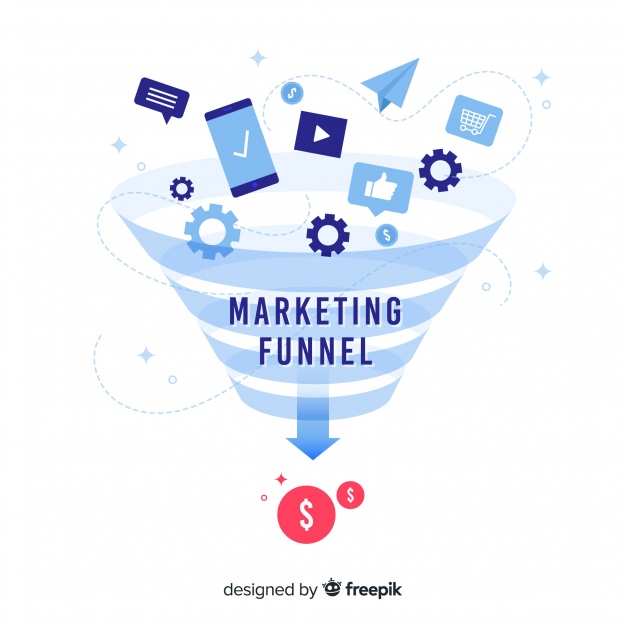What’s up, Internet? It is time once again for another comprehensive guide to SEO lead generation. This time, we are going to tackle important issues that also have something to do with the marketing funnel, which is conversion.
You can exert all the time in the world with spiffing up your website, but in the end, if you are not getting those numbers in, what you are doing is simply not working. What is really necessary at this point in time is to revamp your SEO lead generation efforts to ensure that all your resources dedicated to lead generation are going to be used wisely.
For the newcomers who haven’t tried creating an effective sales funnel before, we can help.
Demystifying the Sales Funnel
A lot of people are actually intimidated by the idea of creating a sales funnel. What many people don’t realize is that it’s mainly just a visualization tool to help you understand how you ca n categorize customers and provide the best possible experience to them while on your website. Because having a website is just one part of the equation. The website has to work in tandem with your marketing goals and the general contour of what milestones you want to achieve in the short term, and the long term.
n categorize customers and provide the best possible experience to them while on your website. Because having a website is just one part of the equation. The website has to work in tandem with your marketing goals and the general contour of what milestones you want to achieve in the short term, and the long term.
Some important things about the marketing funnel:
1. The marketing funnel’s supreme goal is to create a sale, or at the very least, create the conditions necessary for you to achieve a certain type of outcome. For example, in the case of SEO companies, it is for people to call for a consultation. You can’t create this kind of outcome by just telling people to call. You need to unpack an entire experience for them while they are on your website.
2. A marketing funnel has several stages, and each stage is a distinct project on its own. Breaking down the processes, you will begin to see why each phase is so important:
– The first phase of the marketing funnel is creating a basic interest in your brand and what you have to offer. Each SEO company is special in this respect because while SEO companies have varying capacities to help people from different niches, they tend to work with other businesses in specific fields.
So for example, some SEO companies like working with roofing companies, while others prefer working with small e-commerce platforms. To build interest in your business, you need to be able to approach the problem of branding with your intended audience in mind.
– The second phase is increasing engagement with potential customers that have already made themselves know. This includes customers who visit your website regularly for updates and industry information and newer ones that have signed up for free downloads, webinars, and the like. Basically, this segment of the marketing funnel will focus on people who have shown even just a small amount of interest in hiring your company to do their SEO for them.
– The third phase of the marketing funnel gears up to handle customers who have, at least once, shown interest in making a purchase. In the context of SEO companies, these can be people who have actually called you for a free consultation or have claimed a discount coupon or special promotion.
Once you get some of your customers to be excited about your promotions, that’s not where your commitment to them as a vendor ends. You need to continue providing value to them in the form of website updates, blogs, free downloads, and the like. Admittedly, timing has a huge impact on how these things play out.
– The fourth phase or section of the marketing funnel involves how you actually convert to sales. This can be a direct offer on a website or just talking to your clients so you can finally start a new project. Obviously this is going to be different for each customer because people move through marketing funnels at different phases. But with the help of this visualization tool, you will be able to tell what kinds of people are more likely to hire your company, and which ones require a bit more persuading before they go down the funnel.
– The fifth and most exciting phase of the marketing funnel is re-engagement. The big, philosophical question at this point in the marketing funnel is how exactly do you keep old customers coming back for more?
How do you convince them to give your company another go? This is classical psychology at its finest: you give them something of value, continually, and they will little reason not to trust you again. But – and we have to emphasize this – you need to deliver value consistently, so your branding will always be at the forefront of their consciousness when they think of SEO services. With so much noise on the Internet, this would definitely benefit your business in the long term.
IMPORTANT:
A lot of times we see SEO companies and other businesses who try to make a massive sale the first time they make contact. Hard selling is a thing of the past. People don’t like it – plain and simple. If you go by the more aggressive route, it is possible that you won’t see a lot of success moving forward.
What experts do now is they “prime the pump,” so to speak, by mastering the process of getting as many small conversions as they can from the top of the marketing funnel, moving down. This way, even the most resistant of customers will be able to ‘convert’ in small ways, which can increase the chances of them finally making the call and asking your SEO company to take care of their SEO for them.

THE KEYS TO SEO LEAD GENERATIONS SUCCESS
Everyone needs a helping hand with SEO lead generation – more so now that the digital landscape has already changed so much that what people were doing a decade ago no longer works now. The rate of change is so high that so many businesses are left in the dust. Let’s make sure that your business becomes more competitive this year by making use of newer approaches that have been proven to work.
Make Continuous Awareness a Priority
The first part of the marketing funnel focuses on removing the non-familiarity of the market with your branding. There are several ways to improve your visibility and introducing your branding the best possible way to the market. Here are some of the most effective ones:
1. Blog regularly (like we do!)
The biggest misconception about blogging is you have to spend thousands of dollars immediately to pump out countless blogs, to ‘blot out’ the competition and make your website number one. This has never been the case. New websites emerge daily, and many of them eventually find themselves at top spots for specific searches because they deserve to be there.
What does this all mean? Well, what we really want to tell you is you need to start being more confident about your website’s ability to inform and lead people. The latter half of the effort is especially important.
Consumer psychology tells us that customers, whether they are on the Internet or not, tend to be more trusting when they view the vendor or brand as being an authority figure. Out on the Internet, the only way that you will be able to do that is by demonstrating your knowledge and expertise.
Facebook posts have their use, but blogging remains the most direct way to demonstrate your knowledge and comfort in discussing particular points or the industry in general.
The topics for your blog posts will depend largely on what you think your “ideal reader” would like in the first place. Just so you are able to maximize your efforts the first time around, do a little survey (either through actual surveys or by looking at what your closest and most direct competition is doing) and build a “blog tree” around a main topic.
Like a seed eventually building a regal tree, you must first create several core blogs that are going to start your blogging efforts on the right foot. By length and complexity, these core blogs should be competitive, and should at least match what your competition is doing at the moment.
The purpose is to attract as many readers as possible from the main niche and for them to say that your content is fun, reliable, and authoritative. Use a variety of elements to make your core blogs as engaging and shareable as possible, because we’d want your ideal audience to share your content across the platforms. You know that you have hit gold when your views grow organically, because people are actually interested in what you have to say.
2. Social media and advertising
Social media is exceedingly important to the marketing funnel because of how people have evolved as they continued using social media. People aren’t just on social media to have fun, tweet, or share photos. People now use social networks as support networks as well. They crowdsource for information.
They look for the Facebook pages or Instagram accounts of brands they think might be helpful. Google is no longer the sole search engine helping people find what they need. They’re using every social website in existence to accomplish stuff and solve problems.
Even TikTok is being used by businesses to deliver spiffy, 15-secnod content to seal brand superiority across all channels. It might seem crazy – but it definitely works. If you haven’t signed up already, make sure that your business is present on these platforms:
– Facebook
– Twitter
– Instagram
– LinkedIn
– Pinterest
– YouTube
That’s a total of six popular social media platforms that you can explore, to see how well your audience responds. Knowing the different kinds of content that is appropriate for each page will also help you provide a satisfactory experience to your followers and likers. Cross-promotion is also recommended.
Blog about your social media posts, and post about your blogs on your social media channels. This will help not only in establishing a solid following, but also improve, overall, the SEO of your website, blog, and social media channels. The reputation of each one will give other platforms a boost – it’s a win-win situation for everybody concerned.
***
PPC campaigns should definitely not be neglected since they are the fastest way to create traffic for your website. This applies most especially for marketing campaigns and promotions. Use PPC to promote your landing pages so you can test how they are converting. It’s virtually impossible to properly perform A/B testing if you don’t have PPC because the influx of visitors, unless you are already very established, is going to be too slow. Remember to use page-level targeting and make sure that your lead capture forms are in prime condition to capture those emails.
Ease Their Worries in the Consideration Phase
Like getting to know a real person, there has to be further contact after they reach the shores of your website. This is where the second phase of the marketing funnel comes in to help. You need to be able to capture their emails, so you can send further updates and engage them until they warm up to your brand.
The usual technique is to offer something valuable or essential, so they will provide you with their email. Of course, they are going to provide a valid email, or at least an email they open periodically to get the stuff they want to download online. Basically, you will have to think of an amazing lead magnet to make sure that people will be flocking to give you their valid email addresses. (To be continued – stay tuned!)






